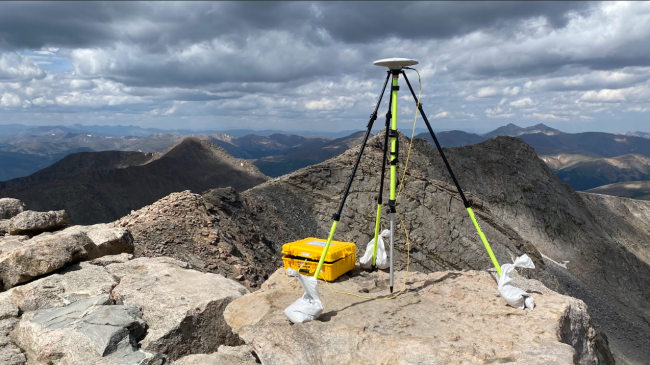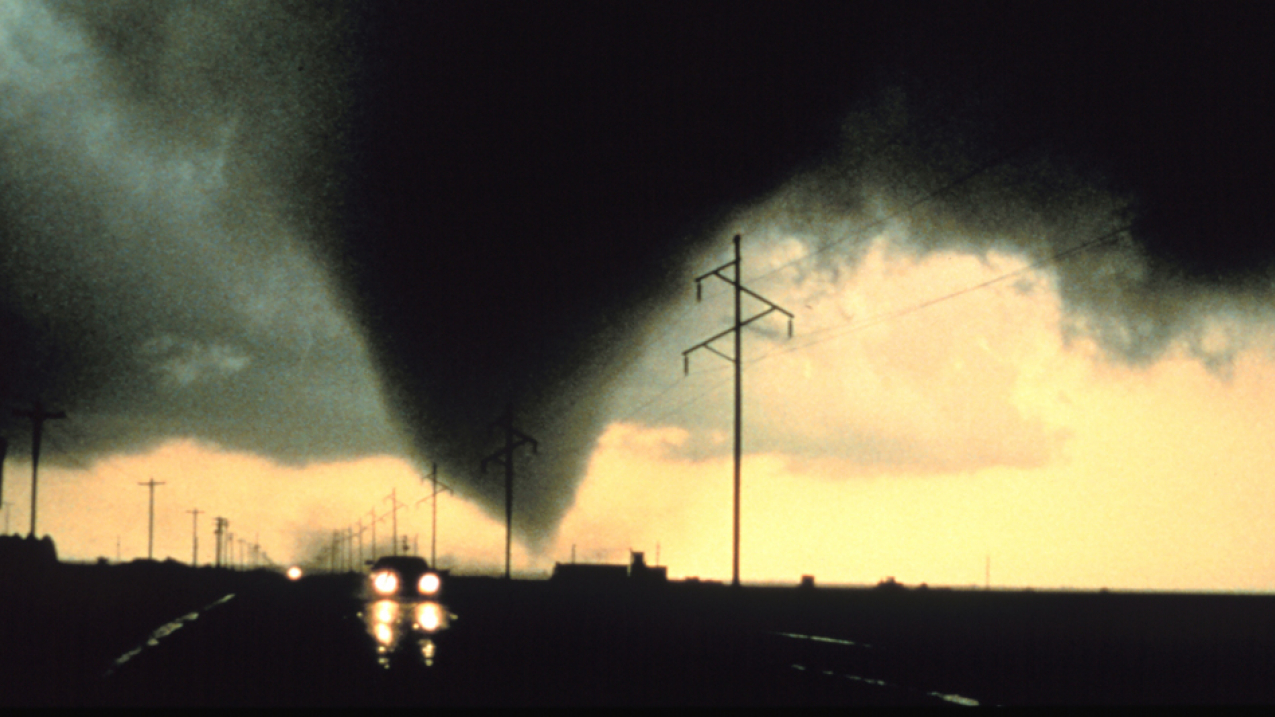
The day they arrived in Oklahoma to begin filming, most of the "Twister" cast, including star Bill Paxton, went storm-chasing with NOAA researchers participating in the VORTEX field project designed to study tornadoes like this one. Though the cast didn't see any tornadoes that day, VORTEX scientists took measurements of this one that occurred June 2, 1995, south of Dimmitt, Texas. (Image credit: NOAA NSSL)
You might remember a [computer-generated] cow flying through the air and high-speed storm-chasing involving a flatbed truck.
It’s hard to believe the blockbuster movie “Twister” premiered 20 years ago. The story featured teams of weather researchers putting futuristic instruments in the path of oncoming tornadoes.
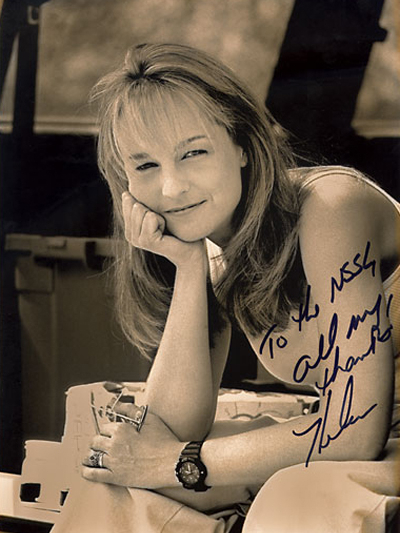
At the time it seemed like the stuff of Hollywood science fiction — but it was actually based on the work of scientists at the NOAA National Severe Storms Laboratory.
In an effort to collect weather data from inside a tornado, NOAA researchers created the TOtable Tornado Observatory (TOTO), named after Dorothy’s little dog from the movie “The Wizard of Oz.” During the 1970s and ‘80s, several groups from NSSL and the University of Oklahoma tried to deploy TOTO, but never scored a direct hit.
TOTO was retired in 1987, but not before it inspired screenwriters Michael Crichton and Ann Marie Martin to develop a story around a similar device.
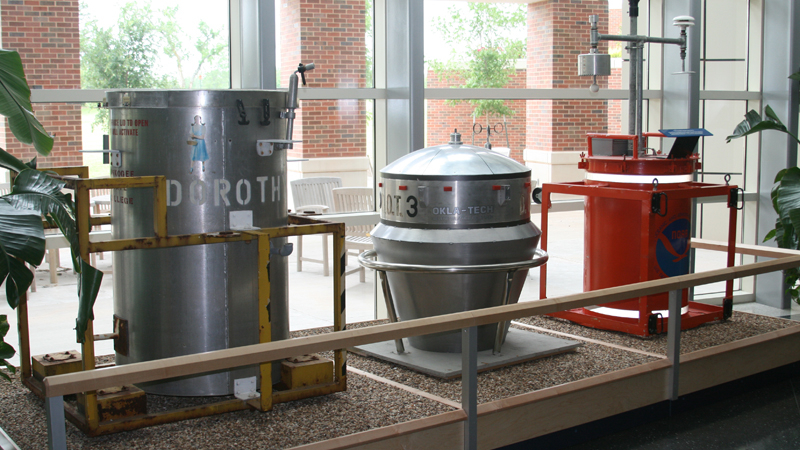
Real or fiction? Dorothy and D.O.T. 3
In the 1996 movie, “Dorothy” was a barrel similar to TOTO designed to release hundreds of sensors into the center of a tornado and send the data back to the weather researchers on the ground, played by actors Bill Paxton and Helen Hunt. To add to the drama, a competing team of storm chasers attempted to deploy a similar device named “D.O.T. 3.”
NOAA’s starring role: Experts to producers and cast
To make sure their script was as realistic as possible, the screenwriters, along with producers Steven Spielberg and Kathleen Kennedy, consulted with scientists from the NOAA National Severe Storms Laboratory in Norman, Oklahoma. Several actors, especially Bill Paxton, spent a lot of time at NSSL to get a feel for the coordination needed to be successful in tornado experiments. Actual tornado researchers took many of the actors out on a real tornado chase.
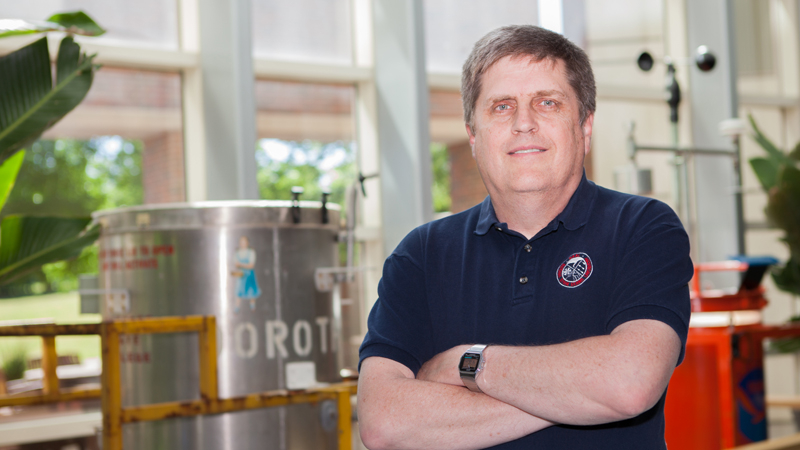
Real scientists continue to solve mysteries of tornadoes
Today, tornado researchers have ground based and aerial instruments that are smaller and easier to deploy in large numbers to sample tornadoes. The long-term goal of putting multiple instruments in the path of a tornado was met a few years ago in southeast Wyoming, during the NOAA- and National Science Foundation-funded experiment known as VORTEX2 offsite link. Scientists continue to study this valuable data.
The ultimate goal in science fiction and in real life research remains the same: to measure the weather in and near a tornado at the ground, adding valuable pieces to the tornado puzzle, improving prediction and hopefully saving more lives.


